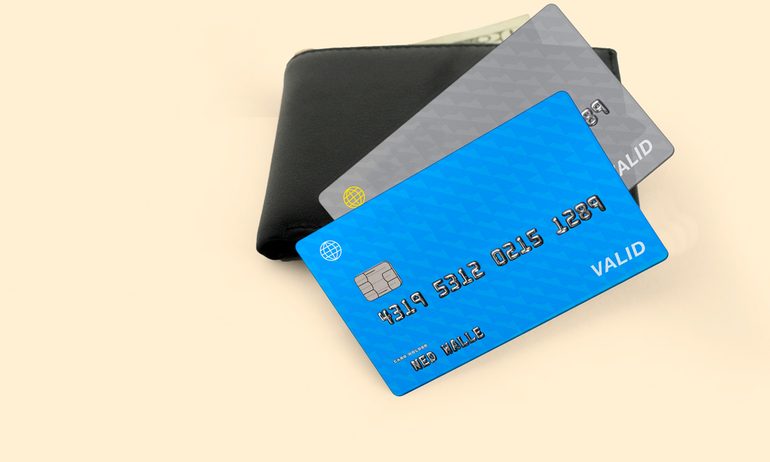2018 Consumer Credit Card Report
Americans are overdue on billions in credit card debt. A NerdWallet survey reveals the most common reason: They just forget to make payments. Learn simple strategies to prevent this costly mistake and use our calculator to see the price of paying credit card bills late.

Many or all of the products on this page are from partners who compensate us when you click to or take an action on their website, but this does not influence our evaluations or ratings. Our opinions are our own.
Credit card delinquencies are rising. Americans’ past due balances have continued to increase in 2018 even though the unemployment rate — a common trigger for delinquencies — is the lowest it’s been in a decade, a new NerdWallet analysis shows.
NerdWallet’s annual Consumer Credit Card Report is our in-depth examination of the credit card landscape and its impact on consumer finances. In last year’s report, we looked at the high fees associated with unsecured credit cards marketed to people with low credit scores.
For 2018, we analyzed data from a variety of sources to find factors that could be linked to the recent rise in delinquencies. We used this information to identify strategies to help consumers avoid missing credit card payments and the late fees and higher interest rates that result.
Our report includes the aggregate amount of delinquent credit card debt and potential late fees associated with it — as well as results from our recent survey, conducted online by The Harris Poll, of American adults to explore why delinquencies occur.
This is the 2018 edition of NerdWallet’s annual Consumer Credit Card Report. For other editions and more research, see our credit card data page.
Key findings
$23 billion overdue. In the first quarter of 2018, just over $23 billion in credit card debt was delinquent — meaning it was 30 or more days overdue, according to NerdWallet’s analysis of data from the Federal Reserve Bank of St. Louis and proprietary NerdWallet figures. The most recently reported credit card delinquency rate is 2.54% of card balances, up from 2.42% last year and 2.12% three years ago, according to the Federal Reserve Bank of St. Louis.
Costly delinquencies. More than 1 in 5 Americans (21%) report having made a delinquent credit card payment at least once in their lives, according to our survey. If each of them paid one first-time late payment fee — a maximum of $27 — that’s more than $1.4 billion in fees alone, according to NerdWallet’s analysis. This late-fee estimate is on top of any interest cardholders would have to pay for carrying a balance from one month to the next.
Forgetting to make payments. The most common reason for a delinquent payment is simply forgetting to make the payment (35%), followed by needing the money to pay for essentials (33%) and having to pay for an unexpected emergency (32%), the survey found. Only 16% of Americans who made a delinquent payment say it was because they overspent on nonessentials — but more than half of Americans (56%) think nonessential spending is the reason delinquencies are rising.
Millennial misconceptions. Americans in our survey assume that millennials (aka Generation Y) are most likely to have credit card delinquencies of 90 days or more (42%) and to have the highest average credit card balances (39%) compared with other age groups. But a study by TransUnion, a consumer credit reporting agency, found that the youngest adults, known as post-millennials or Generation Z, were the age group most likely to have delinquencies of 90 days or more, and Generation X had the highest average credit card balances. [1]
Our survey was conducted online June 21-25, 2018, by The Harris Poll. The survey of 2,019 U.S. adults asked whether they had been late with credit card payments and why, the major reasons they think other Americans make delinquent payments and how they think the different generations compare when it comes to credit card delinquencies, balances and spending habits.
Delinquent credit card debt is costing Americans
More than $23 billion in credit card debt was delinquent in the first quarter of 2018, according to NerdWallet’s analysis. For this analysis, delinquency is defined as credit card debt 30 days or more overdue. In general, a late payment appears on an account holders’ credit report when it is at least 30 days overdue.
“Being delinquent on your credit card can have a huge negative impact on your finances. Not only do you have to pay late fees, but the interest can grow over time and in some cases your credit score drops, too, making future loans more expensive for you,” NerdWallet credit card expert Kimberly Palmer says.
Paying a credit card bill late can be costly. According to our survey, over 1 in 5 U.S. adults (21%) have made a delinquent credit card payment of 30 days or more late. Assuming each of those adults was charged a single first-time late payment fee (a maximum of $27), that’s over $1.4 billion in fees. This number doesn’t include interest accrued on balances carried over month after month and repeat late payments. Late payments can also trigger a penalty APR — a higher interest rate on your account.
Late fees usually get higher after the first offense — the current maximum is $38 — so they can quickly add up.
Americans (incorrectly) think they know why delinquencies are up
Credit card delinquencies aren’t near the 10-year high of 2009, when the rate hit 6.77%, according to the Federal Reserve Bank of St. Louis, but they are edging up again — and the reason why may surprise people. According to our survey, the most common reason Americans think delinquencies are rising is that consumers are overspending on nonessential items (56%).
But only about 1 in 6 Americans who say they’ve been 30 days or more overdue on a credit card payment (16%) say it’s because they overspent on nonessential items, the survey found. The most common reason cited for delinquency? They just forgot to make the payment (35%). The other reasons Americans are making late payments are likely harder to fix.
Almost 3 in 10 Americans who’ve ever made a delinquent credit card payment (29%) say they paid late because they didn’t have income or they were unemployed, according to the survey. Historically, unemployment rates have been one of the predictors for credit card delinquency rates. But since 2015, despite decreasing or stable unemployment rates, delinquencies have been creeping back up.
Although Americans are mostly employed, their incomes may not be anything to brag about. About a third of Americans who made a delinquent credit card payment (33%) did so because they had to pay for essential items, our survey found.
According to NerdWallet’s most-recent Household Credit Card Debt Study, income growth isn’t keeping up with some of Americans’ biggest expenses. As of 2017, medical, food and housing costs have grown at a faster rate than income over a 10-year period. In addition, education costs have exploded in the past decade, and all of these expenses can eat up most, or even more than, many Americans’ budgets.
“Americans often turn to credit cards to fill the gap between income and expenses, which can be a pricey choice, given the high interest rate on most credit cards. But many consumers don’t feel like they have much of an option when faced with rising prices for essentials like medical care, food and housing,” Palmer says.
A quarter of Americans who have been delinquent on a credit card payment (25%) say it was because they prioritized paying off other debt, according to our survey. Over the past decade, mortgage delinquency rates have decreased, and research suggests that credit card bills are more likely than other debt payments to go unpaid or partially unpaid if there isn’t enough money to cover all bills in a month.
According to the Federal Reserve, in 2017, almost half of Americans (49%) would defer a credit card bill completely or partially, compared with 17% doing the same for a rent or mortgage payment, 10% for a student loan payment and 14% for a car payment.
Another factor that may affect credit card delinquencies is rising interest rates. As the Federal Reserve continues to raise rates — which are expected to increase two more times in 2018, and three or four times next year, according to Kiplinger — there’s been an uptick in average credit card interest rates, reaching 14.14% as of May 2018. The higher the interest rate, the more a credit card balance grows and the more difficult it can be for people to get a handle on their monthly bills.
Americans think millennials have the highest balances and delinquencies — but they don’t
Despite data suggesting otherwise, millennials are seen by some as less financially savvy than older generations. So it’s no surprise that when we asked Americans which generation spends the most on nonessentials, carries the highest credit card balances and has the highest rates of credit card delinquencies of 90 days or more overdue, fingers pointed to millennials.
One of these assumptions may be true. According to our survey, millennials (ages 22-37) who have been delinquent on a credit card payment are more likely to say it was because they overspent on nonessential items — 28%, compared with 12% of those in Generation X (ages 38-53) and 5% of baby boomers (ages 54-72). However, millennials aren’t the ones carrying the highest credit card balances or rates of delinquency.
According to first quarter 2018 data from TransUnion [1], the percentage of the youngest adults or post-millennials (Generation Z) who have serious credit card delinquencies (90 or more days past due) is slightly higher than that of millennials (2.53% compared with 2.51%). Gen Xers are close behind at 2.24%, followed by baby boomers (1.2%) and the silent generation (0.81%). The highest credit card loan balances belong to Gen Xers, who owe an average of $7,029, followed by baby boomers ($6,281), millennials ($4,143), the silent generation ($3,885) and Gen Zers ($1,181), according to the data.
Credit card delinquency rates show no signs of slowing down. Every generation, with the exception of Gen Z, has shown increased delinquency rates over the past year, according to TransUnion’s data. The older the generation, the higher the increase. So while millennials and Gen Zers have the highest rates of delinquency currently, they’re not growing the fastest.
According to our survey, more Gen Xers who have ever owned a credit card have made a delinquent payment than any other generation (28%, compared with 20% of post-millennials [2], 25% of millennials, 18% of baby boomers and 16% of the silent generation, those ages 73-90).
The younger they are, the more likely Americans who have ever owned a credit card are to not be sure if they’ve made a delinquent credit card payment of 30 days or more: 18% of post-millennials [2] and 16% of millennials say this, compared with 9% of Gen Xers, 5% of baby boomers and 2% of the silent generation.
What you can do
Pay at least the minimum. It might seem that it won’t matter if you make a $25 or $30 monthly minimum payment on a balance of hundreds or thousands of dollars, but it’s important. On top of a late fee and extra interest, the longer you wait to make your payment, the more it can hurt your credit scores.
If you don’t make payments for so long that your credit card debt is charged off, that black mark could remain on your credit report for seven years — the same length of time some bankruptcies remain on your file. Not only that, but you may still owe the money to a collection agency. To avoid these consequences, by the due date or before, pay at least the minimum — generally 1% to 3% of your balance.
Make it impossible to forget your payment. The simplest way to avoid being late is to set up automatic payments through your credit card issuer’s website. You can also sign up for reminder text or email alerts before your balance is due. Once you get that alert, scour the credit card statement to make sure all transactions are valid and you have the money in your account to cover the scheduled payment.
Ideally, you would pay your credit card balance in full to avoid interest. But if you’re unable to do that, it’s essential to at least make the minimum payment to avoid costly penalties and keep your credit in good standing.
Save when you don’t have to. It’s crucial that you save and pay off debt when times are good, such as when you’re steadily employed and have extra room in your budget, since many Americans blame late credit card payments on a lack of income or because of emergency expenses.
“An emergency savings fund works as an invisible force shield against future credit card debt,” Palmer says. “When an unexpected expense pops up, you can turn to your savings instead of to a credit card, eliminating your risk of becoming delinquent and paying interest and fees.”
If you need help budgeting to find places to save, try using NerdWallet’s free budget calculator.
Methodology
The survey was commissioned by NerdWallet and conducted online June 21-25, 2018, by The Harris Poll. The survey of 2,019 U.S. adults ages 18 and older included 1,862 who have ever owned a credit card and 448 who have been delinquent on a payment. This online survey isn’t based on a probability sample and therefore no estimate of theoretical sampling error can be calculated. For complete survey methodology, including weighting variables and subgroup sample sizes, contact [email protected].
The estimate of total delinquent credit card debt was found by multiplying total credit card debt from NerdWallet’s Household Debt study by the percentage of delinquencies as reported by the Federal Reserve Bank of St. Louis. Data is current as of the first quarter of 2018.
We estimated the total late payment fees by multiplying the most recently reported (July 1, 2017) adult U.S. population from the U.S. Census Bureau by the percentage of Americans who’ve made a delinquent credit card payment, according to our survey data. We multiplied this number by the maximum first-time late payment fee a credit card company can charge, according to the Consumer Financial Protection Bureau.
FOOTNOTES
[1] TransUnion defines the generations differently from the Pew Research Center, the source used to set the age groups for respondents in The Harris Poll survey. In the survey question that asked Americans which generation fit which sentiment, we defined generations to line up with TransUnion’s data:
Generation Z (also known as post-millennials): ages 18-23
Generation Y/Millennials: ages 24-38
Generation X: ages 39-53
Baby boomers: ages 54-72
Silent: ages 73 and older
[2] This question had a low response rate of 75 of those surveyed, and while the results indicate direction they can’t be considered representative of the U.S. population of post-millennials.
Find the right credit card for you.
Whether you want to pay less interest or earn more rewards, the right card's out there. Just answer a few questions and we'll narrow the search for you.





